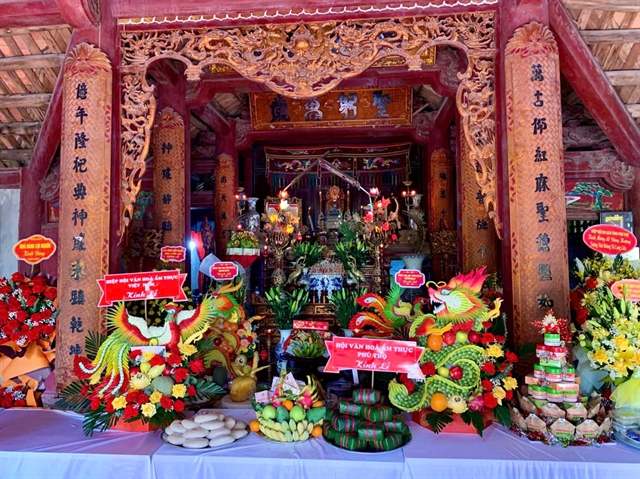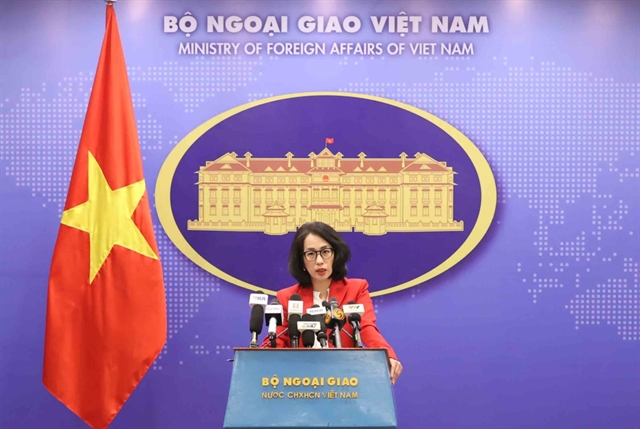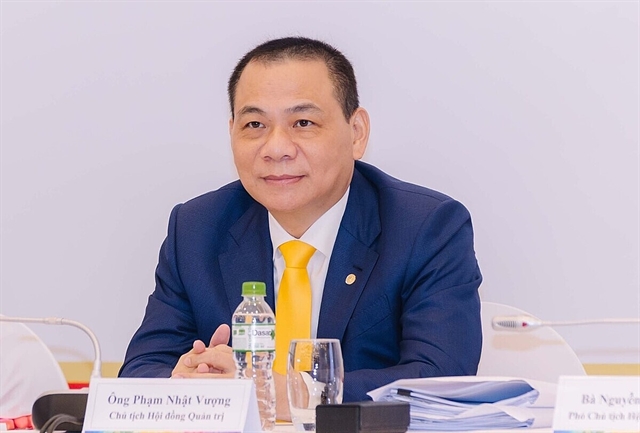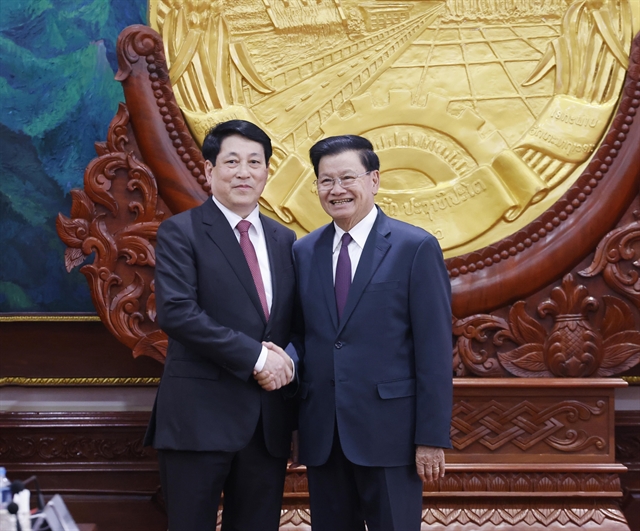

After 26 years in business, the Vietnam-Singapore Industrial Park (VSIP) has expanded to provinces from north to south, becoming a model of Viet Nam's industrial development.
After 26 years in business, the Vietnam-Singapore Industrial Park (VSIP) has expanded to provinces from north to south, becoming a model of Viet Nam's industrial development.
At the workshop celebrating the 25th anniversary of Binh Duong Province's re-establishment, Prof. Tran Dinh Thien, former director of the Vietnam Institute of Economics and member of the Prime Minister's Economic Advisory Group, said Binh Duong had been a miracle for the country in terms of economic development and industrialization.
After two decades as a poor agricultural region, the province has effectively broken through, generating "miracles" in economic and social improvement.
In particular, Binh Duong ranked second in attracting FDI, third in domestic revenue, and among the top five localities contributing to the national budget.
In 2021, the province had the highest per capita income, placing sixth out of 63 provinces and cities in the provincial competitiveness index.
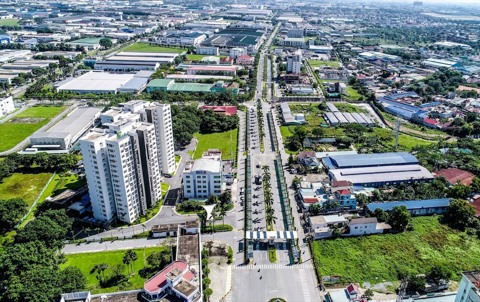
|
An aerial photo of Binh Duong urban area. Photo by Quynh Tran
The foundation and growth of the Vietnam-Singapore Industrial Park 26 years ago, according to Thien, is the driving force behind Binh Duong's development.
The project was developed by a joint venture between Becamex IDC and the Singapore Consortium led by Sembcorp Development.
The industrial centre of the south
The groundbreaking ceremony for VSIP I - Binh Duong took place in May 1996.
The appeal of investing in industrial parks decreased not long after it was formed due to the financial downturn in Asia.
Rather than deferring the project, the joint venture partners decided to invest in creating reality-based operational processes, human resource training, and constructing a comprehensive industrial park infrastructure system.
Industrial production and utility service standards have been adopted, and the country is prepared to welcome investment once the economy has recovered.
Preparation is key to creating tremendous breakthrough momentum. The appeal of VSIP investment changed significantly around 2000.
Since 2002, VSIP I – Binh Duong has attracted an average of 30 projects each year, making it a bright spot in terms of attracting foreign investment to the country. Construction on the 2,0455-hectare VSIP II - Binh Duong began in 2006. The 1,000-hectare VSIP III - Binh Duong is scheduled to be finished in 2022.
Three VSIP initiatives in the south's "industrial capital" attracted 584 enterprises worth $8.3 billion in investment and 150,000 jobs.
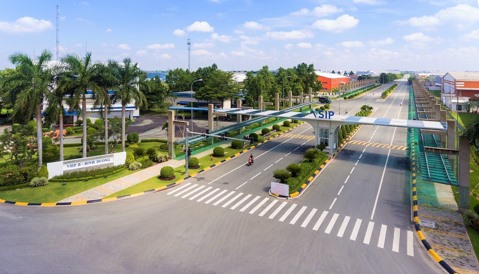
|
VSIP I - Binh Duong has significantly contributed to the transformation of Binh Duong Province. Photo by Quynh Tran
"Becamex, Sembcorp, and their partners have collaborated to execute unprecedented work in response to the pressing need to assist VSIP joint ventures in developing effectively, contributing to the construction of Binh Duong as well as the country's general growth," said Nguyen Van Hung, chairman of Becamex IDC and co-chairman of VSIP Group.
Expanding to northern provinces
Bac Ninh is also a breakthrough locality in the north, thanks to the creation of VSIP.
VSIP commenced construction in Bac Ninh in 2007. The project is on National Highway 1, connecting the northern economic sector with China.
VSIP Bac Ninh spans over 700 hectares, with 500 hectares dedicated to developing clean industrial parks that meet environmental and technological standards.
Bac Ninh has risen to the forefront of the country's industrial development, attracting numerous international investors from Japan, Korea, Singapore, the US and others.
VSIP Bac Ninh II has been functioning since 2019, with a total investment of around VND2,360 billion and a total area of more than 273 hectares.
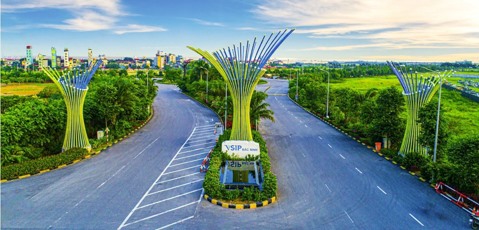
|
VSIP Bac Ninh is a prominent urban region in Hanoi's northeast. Photo by VSIP Group
The third province where a VSIP has appeared is Hai Phong City. The project began in 2010 on a land fund exceeding 1,500 hectares.
After 12 years of operation and development, VSIP Hai Phong has become a shining light for attracting international investors, with 62 projects and a total investment of $2.4 billion.
The low-lying rice fields in Thuy Nguyen District have been turned into modern enterprises that satisfy international standards and employ 51,000 people since the establishment of VSIP.
In addition to Bac Ninh and Hai Phong, a VSIP in Hai Duong is situated on a 150-hectare plot of land in Cam Dien Commune, Cam Giang District.
Spreading to the central region
Besides increasing and spreading its impact in the North and South, VSIPs are also present in several central provinces, including Quang Ngai, Nghe An, Binh Dinh, and Quang Tri.
The VSIP Quang Ngai project, which covers 915 hectares, began in 2013. Currently, 29 investors have committed to implementing the project, with a total investment resource of $815 million.
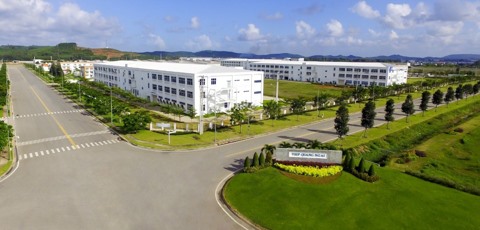
|
Overview of VSIP Quang Ngai. Photo by Invest Vietnam
The 750-hectare VSIP Nghe An project, which began construction in 2015, was the greatest investment in Nghe An. The group has successfully attracted 30 investment projects to the area, with roughly 20 operational and employing 22,600 locals.
The central VSIP map now includes Becamex VSIP Binh Dinh, located in Canh Vinh Commune, Van Canh District.
Becamex VSIP Binh Dinh, located in Canh Vinh Commune, Van Canh District, has been included on the central VSIP map. The project began in September 2020 with a total investment of roughly VND3.3 trillion.
Recently, the People's Committee of Quang Tri Province decided to establish Quang Tri Industrial Park with the investment of VSIP in Hai Lang District, with a total area of 481.2 hectares.

.jpg)
